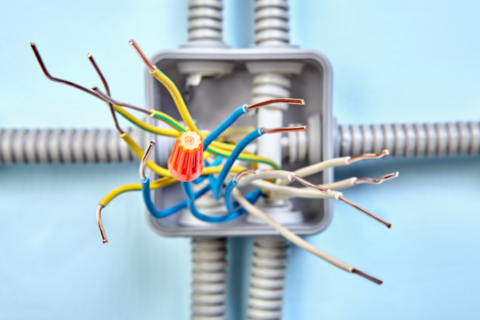Upgrade your Home with New Electric Meter
Electric Meter Box Replacement
As a homeowner, it is important to ensure that your electrical system is up to date and functioning properly. One integral part of the electrical system is the electric meter box. This box houses the electric meter, which measures the amount of electricity your household consumes. It is typically located on the exterior of your home, and serves as a connection between your home’s electrical system and the power grid.
Electrical appliances and devices have become a necessity in our daily lives. From charging our phones to powering our appliances, electricity is essential for modern living. With that in mind, it is crucial to ensure that your electric meter box is well-maintained and functioning correctly. In this article, we will discuss the importance of electric meter box replacement, its process, and when it is necessary. And if you are in need of an electrician for your home or business in Cranston, Warwick or anywhere in Rhode Island, look no further than B&K Electric.
B&K Electric is a family-owned and operated electrical business based in Warwick, RI, serving the residents of Cranston, Warwick, and all of Rhode Island for over seventeen years. Our team of licensed electricians specializes in electrical repair, panel maintenance, and installation. We prioritize community and customer service, making us the go-to electrician for all your electrical needs in the Warwick area, and the greater Providence area.
Why is Electric Meter Box Replacement Necessary?
There are several reasons why you may need to replace your electric meter box. One of the most common reasons is that the box has reached its lifespan. Like any other equipment, electric meter boxes have a limited lifespan and need to be replaced every 15-20 years. As your meter box ages, it becomes increasingly susceptible to rust, corrosion, and wear and tear, which can compromise its functionality and potentially lead to safety hazards.
Another reason for replacement is damage to the meter box. Whether due to extreme weather conditions or physical damage, any type of damage to the meter box can render it unsafe and require replacement. In such cases, it is crucial to consult a licensed electrician immediately to assess the extent of the damage and determine the best course of action.
Furthermore, if you are planning a home renovation or upgrade, it may be necessary to replace your meter box. This is because the electrical system of your home may have changed, and the old meter box may no longer be compatible and may pose a safety risk. In such cases, it is always best to consult a professional electrician to ensure that your new meter box is installed correctly and safely.
The Replacement Process
The process of electric meter box replacement can be daunting, and it is always best to leave it to a licensed electrician. However, it is still important to understand the steps involved to ensure that the replacement is done correctly and safely.
The first step in the replacement process is to disconnect the power to your home. This is done to ensure that you and the electrician are safe while working on the meter box. Next, the electrician will remove the old meter box and disconnect it from the electrical lines. After that, the new meter box is installed, and the electrical lines are connected to it. The final step is to reconnect the power and test the new meter box to ensure that it is functioning correctly.
When Should You Consider Replacing Your Meter Box?
Aside from the reasons mentioned earlier, there are specific signs that indicate it is time to replace your electric meter box. One of the most common signs is rust or corrosion on the exterior of the box. This is an indicator that water has seeped into the box, which can lead to electrical malfunctions and safety hazards.
Another sign is a buzzing or humming sound coming from the box. This could indicate loose wiring or damage to the meter box and should be addressed immediately by a licensed electrician. In addition, if you experience frequent power outages or flickering lights in your home without any apparent reason, it may be due to a failing meter box.
Benefits of Replacing Your Electric Meter Box
Replacing your electric meter box offers several benefits, the most important of which is safety. A new and properly functioning meter box greatly reduces the risk of electrical malfunctions, fires, and other safety hazards. It also helps to ensure that your electrical system is running efficiently, saving you money on utility bills.
Moreover, a new meter box allows for better monitoring of your electricity consumption. With advancements in technology, newer meter boxes have features that allow you to track and monitor your energy usage, giving you more control over your energy consumption and costs.
The core message
Electric meter box replacement is an essential part of ensuring the safety and efficiency of your home’s electrical system. As a homeowner, it is essential to keep an eye out for signs that may indicate the need for a replacement. Additionally, always consult a licensed electrician for any electrical work, including meter box replacement, to ensure that the job is done correctly and safely.
If you are in need of an electrician in the 02910 zip code for your home or business in Cranston, Warwick or anywhere in Rhode Island, look no further than B&K Electric. Our team of licensed electricians has been proudly serving the community for over 17 years, specializing in electrical repair, panel maintenance, and installation. Trust us to keep your home’s electrical system safe and efficient.
Topics:


